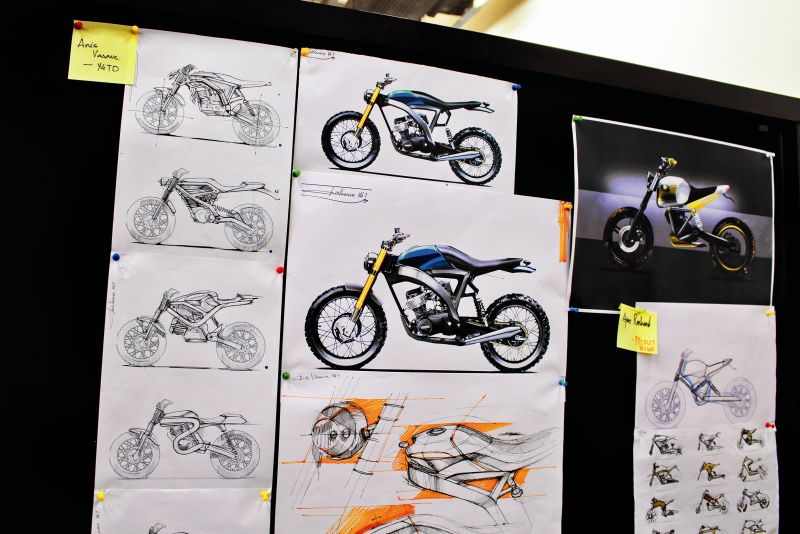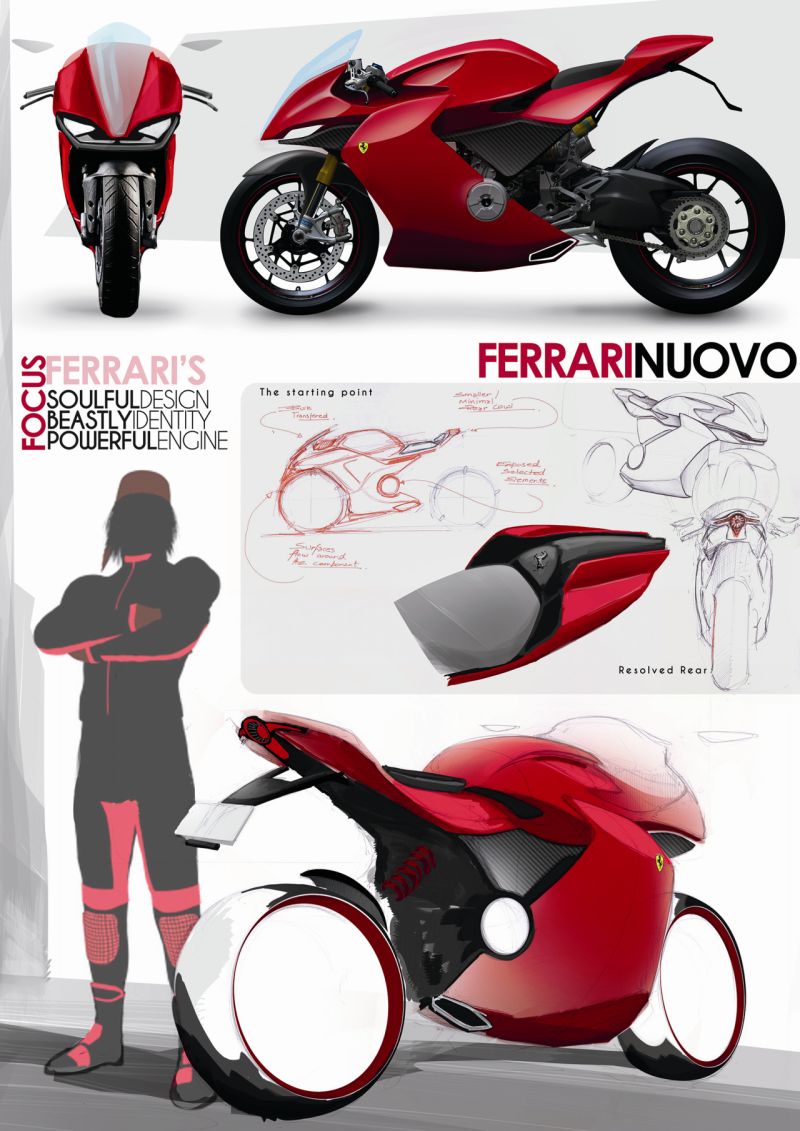The idea of the first project was to make sure everyone got to grips with the fundamental principles of motorcycle proportions with the least possible reliance on bodywork. The second was exactly the opposite — encouraging them to understand what makes a hypersport design work, and come up with some suitably expressive forms. The intention here was to study the competitors, and figure out what makes a sports bike look exciting, while the Ferrari part was meant to appeal to the strongly automotive-bias within the college. The goal was to express some of Ferrari’s design language (dramatic forms but with a controlled finesse) into a new context — a challenge I thought would be eagerly snapped up. Instead, the students got bogged down in the details, with features like the (dated) Testarossa side fins being teleported on to a motorcycle, or, in one case, a student trying to shoehorn a V12 engine into a bike frame. Er, no, guys, that’s missing the point. You’re supposed to transpose the identity, not the entire running gear.
In an ideal world, all the students would have taken on both projects, to experience the full extremes of the profession. But time limitations meant they divided into two groups to tackle one brief each. Some of the students who opted for the ‘cheapest wheels’ project were product designers, not automotive, and, predictably, they struggled at the beginning. But by Friday, everyone had grasped the basics, and presented some great concepts — even if Ducati-like space-frames aren’t exactly my idea of minimalism. Several students worked right through Thursday night to get their work done in time for the ‘Crit’. Yep, been there, done that.
The enthusiasts were all drawn magnetically to the Hypersport project, although it quickly became obvious that Ducati was already established as the two-wheel Ferrari, colouring etc. Being the top of the range, the Panigale was easily defined as the latest and most sporting package, and several designs ended up being rather obvious photo-montages with lightly modified bodywork cloned over the original. While this did theoretically fulfill the brief, the short-cut avoided the entire thinking process, along with the necessary trial-and-error involved with understanding the proportions, so these students were graded less favorably than those who came up with something more individual.
The most rewarding part of this course was seeing that all the participants, from seasoned enthusiasts to newcomers, raised their levels visibly over the week (I had everyone present their first sketch alongside their final one so we could measure the progress). These chaps – and two girls – will be designing the motorcycles we ride in the very rear future, and not just in India. This country has a rapidly developing R&D industry, with a strong demand for homespun design talent, and it’s reassuring to see its own design colleges becoming state-of-the-art institutions. Its alumni are already finding their way on to car and motorcycle design teams worldwide.
As the offspring of two teachers, both of whom managed to stay seamlessly connected to the education system all their lives, I betrayed the family trade and went into industry. Motorcycle design, as a career, is still something beyond their comprehension. In fact, even though I’ve been reasonably successful at it for over 30 years, my parents are still waiting for me to get a ‘proper’ job. Maybe, the occasional slot teaching at a design college will help meet their criteria.





Leave a Reply